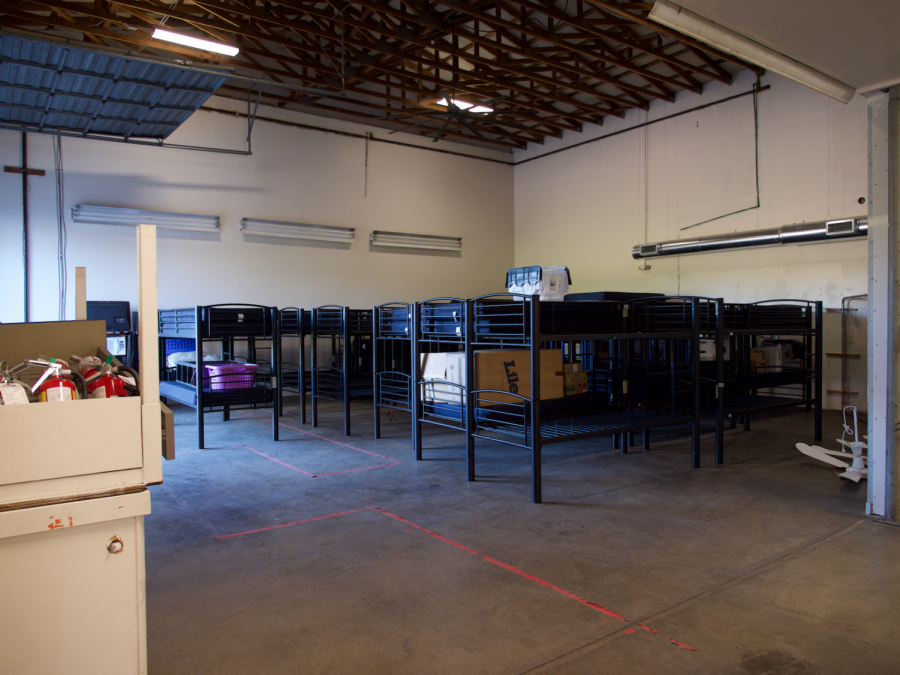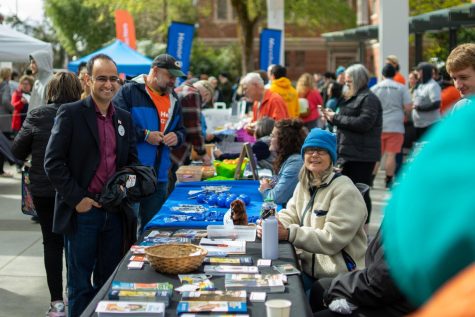Corvallis homeless population at risk during cold weather season
January 14, 2019
On October 7, 2015, the city of Portland, Oregon declared a state of emergency due to their severe homeless issue, according to PortlandOregon.gov. Portland is not the only city with this issue, however. According to an article by the Gazette Times, there exists about 1000 homeless people in Corvallis, forcing this town to confront an issue of its own.
During these chillier month, additional dangers to homeless people present themselves. According to the National Healthcare for the Homeless Council, cold weather poses many risks for the homeless population, including: frostbite, mild to severe hypothermia, and even trench foot. The NHHC says that homeless people are at risk of these conditions in weather ranging from 50-32 degrees fahrenheit. The temperature in Corvallis during the winter frequently dips below this temperature range at night.
People can become homeless for a variety of reasons. It is possible for domestic abuse victims to have nowhere else to go after escaping their abuser. Sometimes, medical bills become so burdensome on a person’s finances that they are eventually cannot afford their rent or mortgage. Some homeless people are facing issues of mental health. Some families become homeless after a natural disaster destroys their home, like a flood or a forest fire.
With these reasons combined, the city of Corvallis is forced to deal with a growing population of homeless people.
Kendra Phillips-Neal is the program director of Jackson Street Youth Services, which assists homeless and at risk of being homeless youth in both Corvallis and Albany.
“The risks and dangers of being homeless during cold weather is not having a safe and warm place to be, falling ill and not being able to obtain care or become healthy due to being in the weather constantly, more serious health issues that come with not being able to keep your socks and shoes dry and attempting to sleep in extreme weather conditions (loss of toes, limbs, or death),” Phillips-Neal said.
According to Phillips-Neal, there are too few warming shelters available in Benton County, and the ones that do exist only open up if the weather is very severe. She says there are even fewer opportunities for the homeless youth of the county.
“Most cold weather shelters are for the adult populations and not appropriate for our youth,” Phillips-Neal said.
Due to the cold weather, Jackson Street Youth Services, and all shelters, are in need of greater donations that could help the homeless population during the winter.
“Socks are the number one requested item on the street. Decent gloves are always nice too. Things like easy-to-heat hot meals, the hand and foot warmers you can pop in gloves and shoes, and tarps are always awesome donations,” Phillips-Neal said.
Bill Glassmire is the Corvallis city councilor of Ward Seven, a district that is located northwest of the main campus of Oregon State University. According to Glassmire, the only special action taken during the winter months to alleviate homelessness is the opening of two winter homeless shelters.
“The organization and the staffing of those shelters are good-size volunteer efforts; local governments provide some funding but no operational staffing,” Glassmire said. “The cold-weather shelters include some navigation services to help homeless people take advantage of existing social services, for example through Samaritan Health Services and Benton County Health Department.”
According to Glassmire, the city of Corvallis has, in recent years, limited its government activities to designing and implementing big-picture legislation and regulations.
In 2018-19 the city provided $60,000 for the men’s cold weather shelter, as well as $38,400 in funding for the lead administrator of the Housing Opportunities Action Council and about $360,000 of social service funding that helps vulnerable populations, including the homeless.
The mayor of Corvallis, Biff Traber, noted the importance of focusing on the issue of homelessness.
“Homelessness is a very serious problem on which I spend a substantial amount of time working,” Traber said. “The work on it ranges from dealing with city council and staff, Benton County, HOAC and community groups on both immediate needs as well as the long term increase in affordable housing and supportive services.”
According to Traber, Corvallis is actually unique in how the city supports the various non profits who help assist the homeless.
“These (non profits) are funded by community donations, grants and funding from government. Corvallis has for decades funded these organizations through its Social Services Fund; this is not common in small cities,” Traber said.
The city of Corvallis has, for years now, supported and worked closely with non profit organizations like shelters and churches, in order to solve the issue of homelessness, according to Traber.
The reason the first letter of HOAC stands for Housing, is because this is the key to solving homelessness, according to Traber. Temporary shelters are not a permanent solution.
“The ultimate solution to homelessness is provision of housing for all those who need it along with the services and support needed to keep them housed,” Traber said. “We as a city need to have much more housing affordable for those at all income levels. This is a challenge that the city takes seriously.”






















































































































